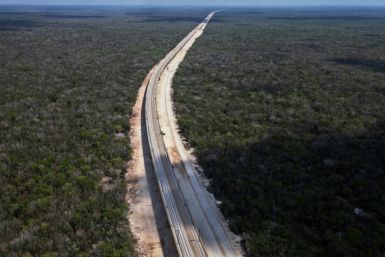New Crime Data Reveals Rise In Sexual Assault And Illicit Drug Offences In Australia

Recent crime statistics in Australia has put the spotlight on sexual assault and illicit drug offences. Sexual assault and other related offences are on the rise in Australia. The Australian Bureau of Statistics has noted an increase of 19 percent in the number of cases involving sexual assault between 2013 and 2014.
In a press release obtained from the ABS website, William Milne from the statistics bureau said the number of sexual offenders had increased from 6,006 in 2012-13 to 7,175 in 2013-14. The majority or 93 percent of sexual offenders are male.
The number of young Australians charged with the principal offence of sexual assault has risen by 36 percent from 1,369 in 2012-13 to 1,855 in 2013-14. Youth offenders are those charged with offences between 10 to 19 years old.
Sexual assault statistics
Australia had a total of 405,692 offenders between 2013 and 2014. The number has increased by 4 percent from the previous year. Men accounted for 78 percent of the total offences while the number of both male and female offenders rose by four percent.
Individual Australian state and territory governments are responsible for upholding the law. Although national standards and classifications were used to gather the data, ABS stated that the information used in the report reflected the administrative processes of police agencies in handling offenders.
The Crime Victimisation Survey conducted by the ABS in 2010-11 revealed that 54,900 Australians aged 18 and over were victims of at least one incident of sexual assault in the past 12 months prior to the survey. The findings were based on people’s experiences of criminal offences.
Many Australians have survived sexual assault. According to results of the Personal Safety Survey in 2012, 5.3 percent of women over 18 years of age have experienced sexual assault while 8.7 percent of men reported the same. In 2012, an estimated 17 percent or 1,494,000 of women aged 18 and up have experienced sexual assault since the age of 15.
The survey found that both women and men are more likely to experience sexual violence by someone they know rather than a stranger. For women, the most likely type of known perpetrator of sexual violence or assault was a partner or a date. As for the men who were victims of sexual assault, they said a neighbour or acquaintance was involved.
Illicit drug offences data
Following sexual assault and other related offences, illicit drug offences also rose by 11 percent in 2014. According to the Australian Crime Commission, the illicit drug market continues to be a primary source of profit for organised crime groups. The illicit drug markets in Australia have links with the global drug market since organised crime groups operate across national and international borders. The number of national illicit drug arrests and seizures in 2012-13 were the highest on record.
The crime commission has found that the growth of the Internet has contributed to the rapid expansion of the illicit drug market. Drug users can easily access the drugs including information regarding the availability of new drugs. As a result of the illicit drug market’s expansion, the trade is quickly replicated in Australia.
In 2012-13, Australia recorded 86,918 cases of national illicit drug seizures with 19.6 tonnes of drugs. The police also made 101,759 arrests for illicit drug offences. This is equivalent to one seizure for every seven minutes.
Cannabis is still the most popular drug in Australia since it accounts for most of the seizures in the country. Police have observed the rise of methylamphetamine with the highest seizures recorded in 2012-13. As for cocaine, the crime commission has found no indication that the market is increasing in size.
With the exception of Victoria, more than half of illicit drug arrests in Australia are related to cannabis. Amphetamine-type stimulants were reported by all states and territories as the second most-seized drug in 2012-13.
The heroin market in Australia has remained stable over the past 2 years with market indicators suggesting that users mostly belong to the ageing population. The ACC continues to monitor the market. An arrest involving heroin last month has revealed a new way of smuggling drugs.
The Australian Federal Police had intercepted a 50-year-old Cambodian-Australian women from smuggling heroin last January. According to the AFP media release, Australian Customs and Border Protection Service officers at Sydney airport on Jan. 8 had requested a woman for baggage inspection after arriving on a flight from Cambodia.
During the search, officers detected residue of cocaine and ephedrine. The woman was subjected to a body scan but images showed inconsistencies. The ACBPS turned over the matter to the AFP since they suspected the woman to be concealing the drugs “internally.” She was then taken to the hospital where she had passed 252 pellets of heroin.
ACBPS Regional Commander Tim Fitzgerald found the matter to be of concern since smuggling drugs internally can affect a person’s health and safety. AFP said the recent arrest should serve as a warning to criminals who will be facing up to 25 years of imprisonment if caught smuggling drugs in the country.
To report problems or leave feedback on this article, contact: r.su@ibtimes.com.au






